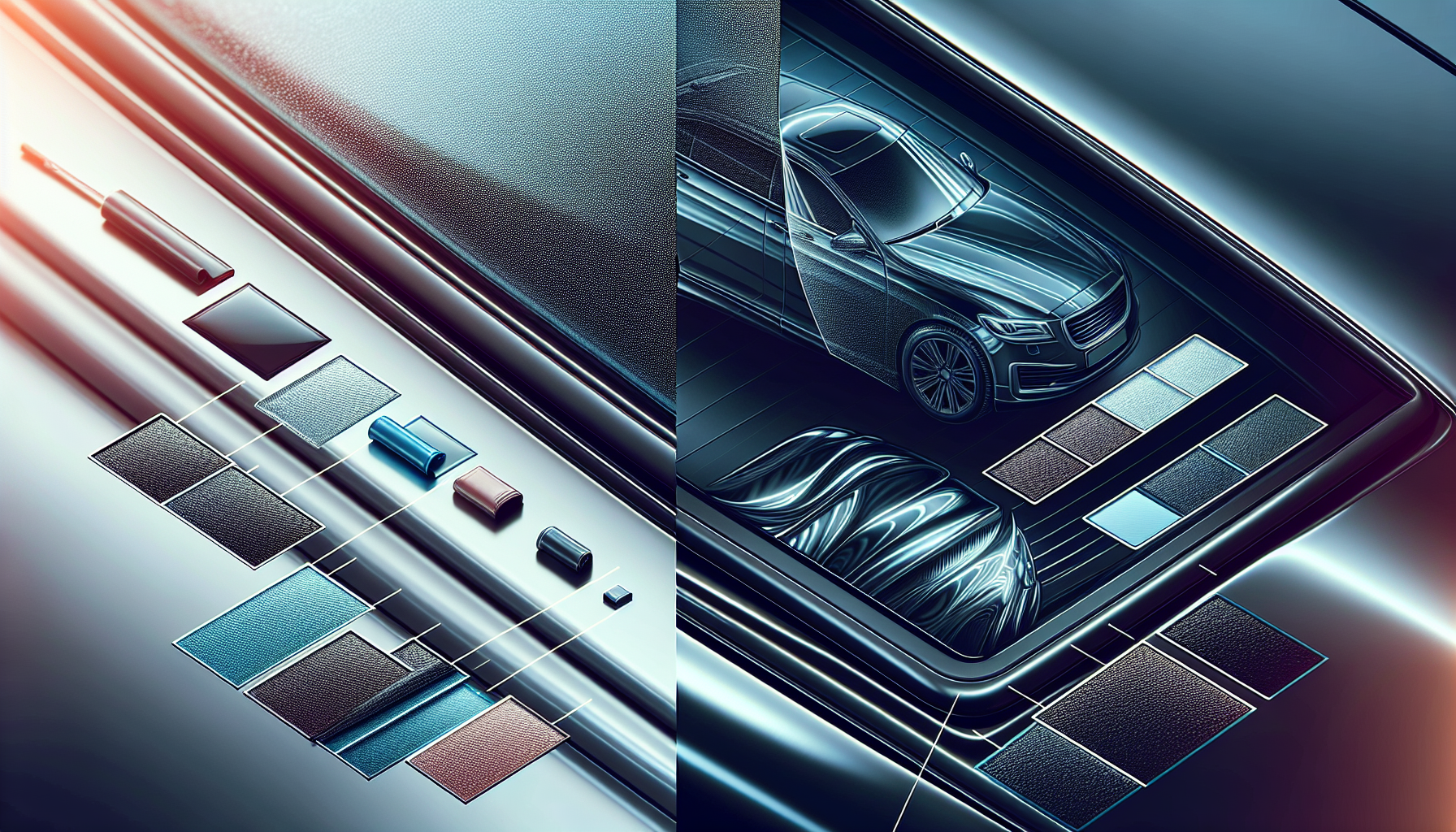Understanding Factory Tinted Windows and Aftermarket Window Tinting
Are you considering adding tint to your vehicle’s windows but unsure of the differences between factory tinted windows and aftermarket window tinting? Let’s break down the key distinctions between the two options for you.
Factory Tinted Windows
When a vehicle has factory tinted windows, it means the glass used for the windows already has a level of tint applied during the manufacturing process. This factory tinting is achieved by adding pigment to the glass before it is formed, creating a layer that reduces the amount of light and heat that can pass through the window.
Factory tinted windows generally have a lighter shade compared to aftermarket window tinting, ranging from 15% to 26% Visible Light Transmission (VLT). VLT refers to the percentage of visible light that can pass through the glass, with lower percentages indicating darker tint levels.
Aftermarket Window Tinting
On the other hand, aftermarket window tinting involves applying a tinted film to the vehicle’s existing windows. This film is made of polyester and comes in various shades and thicknesses to achieve the desired level of tint. Aftermarket window tinting provides more customization options in terms of darkness, color, and additional features such as UV protection and heat rejection.
Aftermarket tinting offers a wider range of VLT percentages, allowing you to choose from light tints like 50% VLT to very dark tints such as 2% VLT. This flexibility in shade selection gives you more control over the appearance and performance of your window tint.
Pros and Cons of Factory Tinted Windows
Let’s discuss the advantages and disadvantages of factory tinted windows to help you understand if this option is suitable for your needs.
Pros:
-
Uniform Appearance: Factory tinted windows are applied uniformly across all windows of the vehicle, providing a cohesive look.
-
Less Risk of Bubbling or Peeling: Since the tint is integrated into the glass itself, there is minimal risk of bubbling or peeling over time.
Cons:
-
Limited Shade Options: Factory tinted windows come in a standard shade determined by the manufacturer, offering less customization.
-
Less Heat Rejection: Factory tinted windows may have lower heat rejection capabilities compared to some aftermarket films.
Pros and Cons of Aftermarket Window Tinting
Now, let’s explore the pros and cons of aftermarket window tinting to help you evaluate if this option aligns with your preferences.
Pros:
-
Customization: Aftermarket window tinting offers a wide range of shades and additional features like UV protection and heat rejection, allowing you to tailor the tint to your specific needs.
-
Enhanced Privacy: Darker aftermarket tinting can provide increased privacy and protection from the sun’s glare.
Cons:
-
Maintenance: Aftermarket tinting requires occasional maintenance to ensure longevity and prevent issues like bubbling or discoloration.
-
Potential for Installation Errors: If not properly installed, aftermarket tinting may result in bubbles, creases, or imperfections that affect the overall appearance.
Cost Comparison
When considering the cost of factory tinted windows versus aftermarket window tinting, several factors should be taken into account for an accurate comparison.
Factory Tinted Windows:
-
Initial Cost: The cost of factory tinted windows is typically included in the overall price of the vehicle, making it a more cost-effective option upfront.
-
Long-Term Savings: Factory tinted windows require minimal maintenance and are less likely to need replacements, potentially saving you money in the long run.
Aftermarket Window Tinting:
-
Material and Installation Costs: Aftermarket window tinting involves separate costs for the tint material and professional installation, which can vary based on the type of film chosen and the complexity of the installation.
-
Potential for Additional Features: Higher-end aftermarket tint films with advanced features like ceramic or nanotechnology may come at a higher cost but offer enhanced performance benefits.
Choosing the Right Tint for Your Vehicle
Ultimately, the decision between factory tinted windows and aftermarket window tinting comes down to your preferences, budget, and desired level of customization. Consider the following factors when choosing the right tint for your vehicle:
-
Aesthetic Preference: Decide on the shade and appearance you want for your vehicle’s windows, whether you prefer a lighter factory tint or a darker aftermarket tint.
-
Performance Features: Assess if you need additional features such as UV protection, heat rejection, or privacy, which may influence your choice of tint.
-
Budget Considerations: Determine your budget for window tinting, taking into account both the initial cost and potential long-term maintenance expenses.
By evaluating these factors and understanding the differences between factory tinted windows and aftermarket window tinting, you can make an informed decision that suits your needs and enhances the look and functionality of your vehicle’s windows. Visit Xclusive Wrap and Tint for expert advice and professional installation services to achieve the perfect tint for your vehicle.
